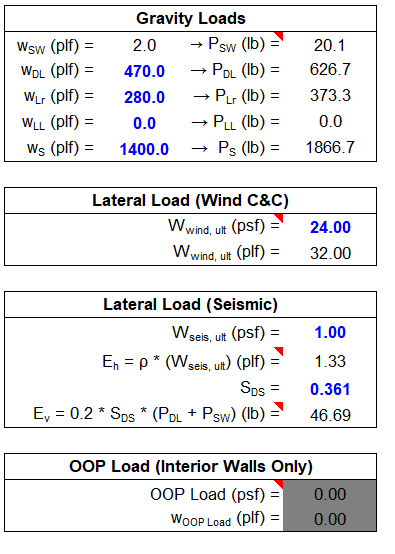I am updating and rewriting my firm's wood spreadsheets and I am currently on wall studs.
The spreadsheet is finished, I am just double checking it works and matches with other programs (ForteWeb, WoodBook, etc.) but I am running into some complications with the lateral loading.
The spreadsheet considers if you're an interior or exterior wall in order to apply the correct loadings.
I have inputs for wind and seismic forces (Ev and Eh) while these programs only consider wind laterally. I know when checking deflection, you only consider wind but when checking bending, would you consider the seismic force if it controls?
I know it is unlikely for the seismic force to control for the exterior wall example, but what about an interior wall?
I also have the spreadsheet set up for it to automatically use an OOP load of 5psf to check bending and deflection if the seismic force is less than 5 psf.
Thanks in advance!
The spreadsheet is finished, I am just double checking it works and matches with other programs (ForteWeb, WoodBook, etc.) but I am running into some complications with the lateral loading.
The spreadsheet considers if you're an interior or exterior wall in order to apply the correct loadings.
I have inputs for wind and seismic forces (Ev and Eh) while these programs only consider wind laterally. I know when checking deflection, you only consider wind but when checking bending, would you consider the seismic force if it controls?
I know it is unlikely for the seismic force to control for the exterior wall example, but what about an interior wall?
I also have the spreadsheet set up for it to automatically use an OOP load of 5psf to check bending and deflection if the seismic force is less than 5 psf.
Thanks in advance!

